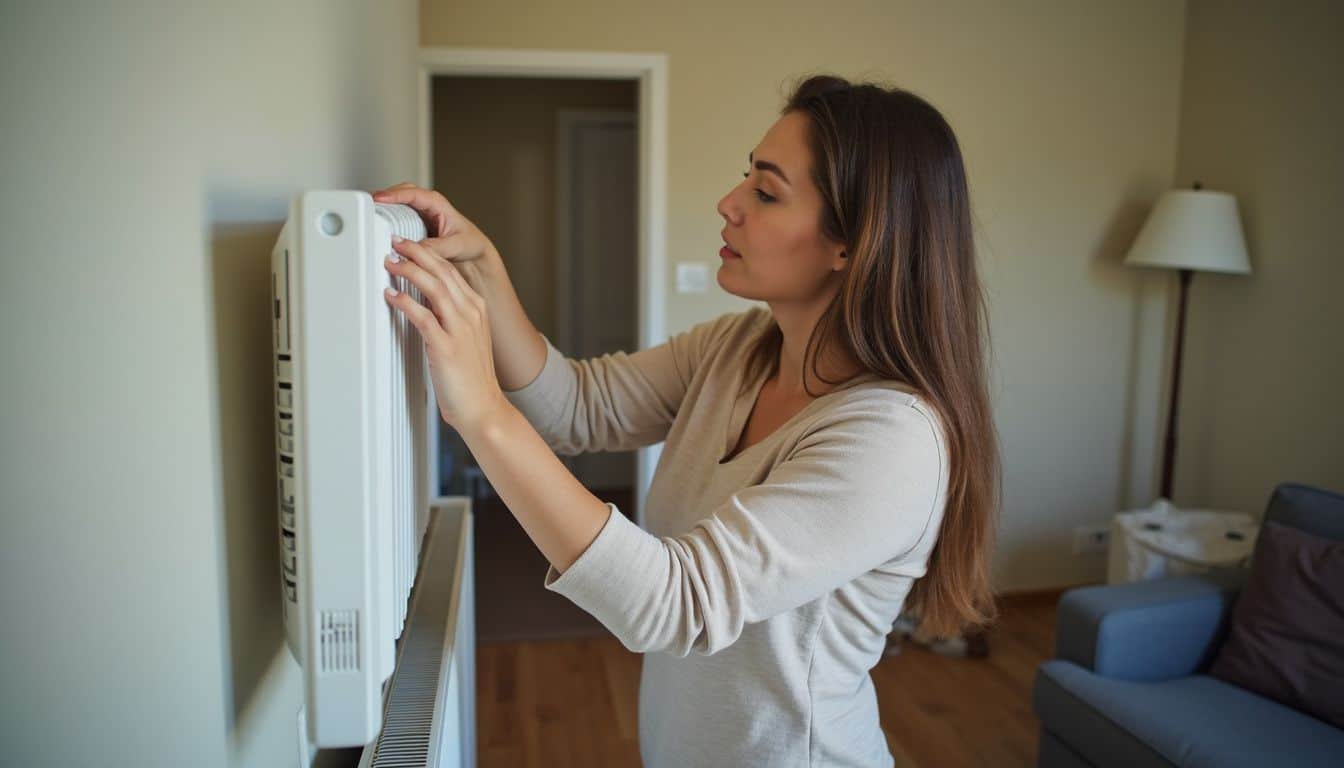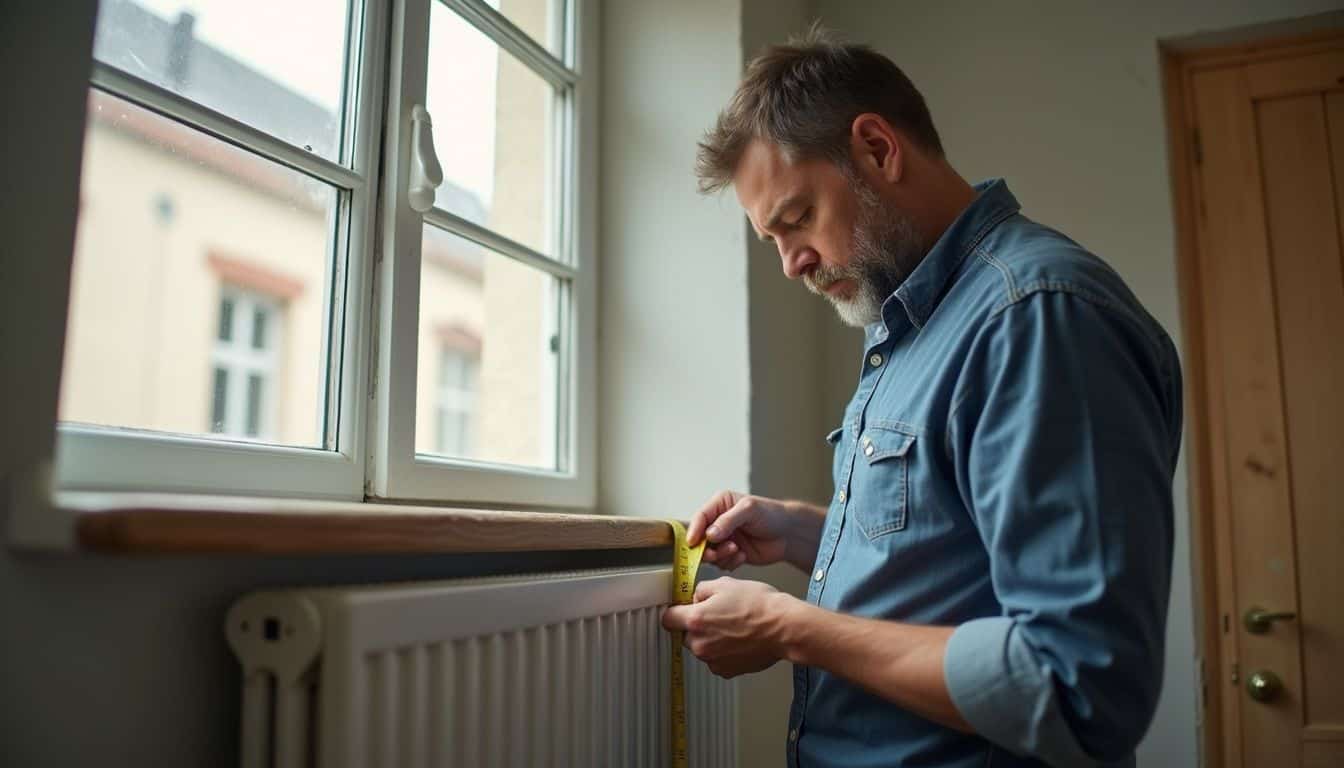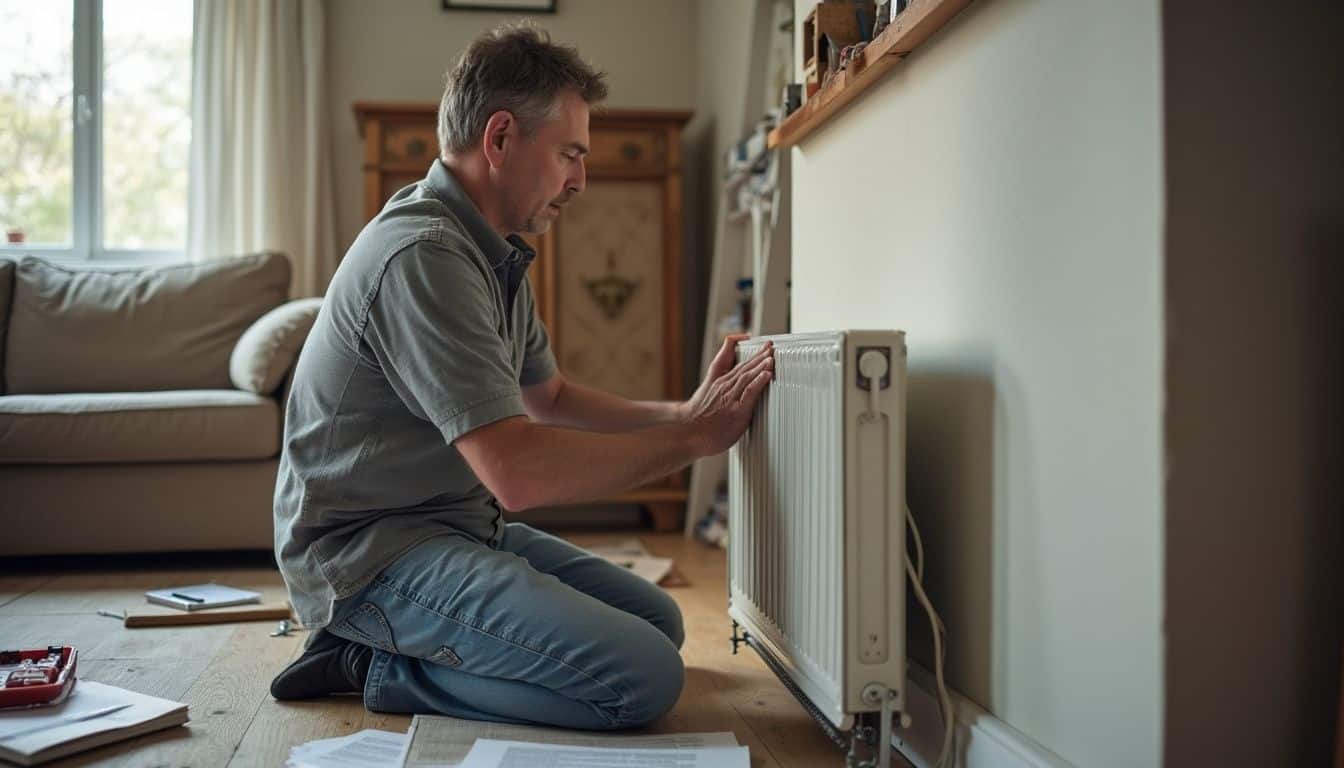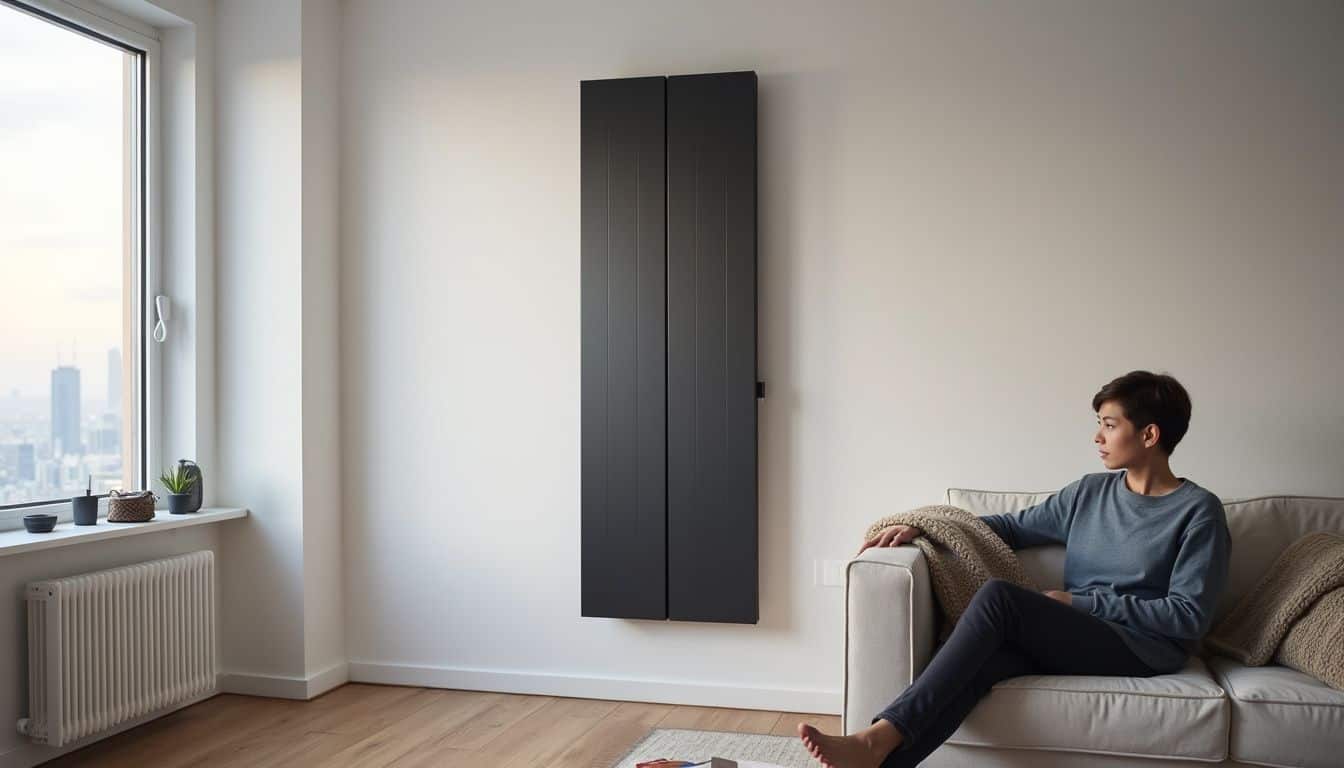Short on wall space but still want steady heat? Compact radiators offer a smart space-saving design for small spaces and narrow hallways. Many models boost energy efficiency and help lower energy bills without hurting style.
This guide answers the question, are compact radiators any good? You will see six key benefits, clear info on BTU output (the heat a radiator gives off), and simple installation tips. We also cover options for your central heating system.
Keep reading to see if a compact model suits your room.
Key Takeaways
Some compact heaters deliver 55W to 190W and use modern materials like aluminum. Low wattage can bring running costs to about one penny per hour.
Ultra-slim models, as narrow as 38 mm, fit tight spots under windows or in narrow hallways, saving floor space and supporting energy-efficient heating.
Many units are EN442 certified, arrive factory-fitted for easy installation, and include up to a 10-year guarantee.
New designs work with smart thermostats and pair with central heating, including underfloor systems or future hydrogen-ready boilers.
Choosing the right BTU output for your room prevents waste, trims energy bills, and keeps comfort steady.
Table of Contents
What Are Compact Radiators?

Compact radiators are slim heaters that give strong warmth with less bulk. They fit below windows, in narrow halls, or in small bathrooms without crowding the layout. You get comfort and a neat look in one package.
These radiators come in many shapes and finishes, so matching your decor is easy. Common materials include stainless steel and aluminum. Those materials heat up fast and cool down fast, which saves energy and gives better control.
Many models work with different central heating setups, such as underfloor systems and heat pumps. Some tube styles are only 38 mm wide, ideal for homes where every inch counts.
Moisture-safe options suit wet rooms, utility areas, or greenhouses. For a compact unit with strong heat, see the compact but powerful home heating option.
Key Benefits of Compact Radiators

Compact radiators support even heat distribution and help cut energy bills. The design makes safe, efficient radiant heating easier to add in more rooms.
How Efficient Are Compact Radiators at Heating?

Aluminum models heat up quickly and cool down quickly. Extra fins inside increase surface area, which improves heat exchange. That means faster, more even warmth across the room.
Some compact versions deliver outputs from 55W to 190W. That range fits desks, halls, and small baths. It also helps you size heat to the actual need.
Running costs can be low. A 55W unit may cost about one penny per hour, while a 190W unit might be near five pence per hour. These figures depend on the electricity tariff used in the UK from January to March 2025.
Compact radiators often run at lower water temperatures than older styles. Less water volume helps reduce energy consumption and smooths control. Pairing with smart thermostats adds precise temperature settings and better schedules.
How Do Compact Radiators Save Space?

Size matters in small rooms. Slim tube designs, like the Morris tube heater, measure only 38 mm wide. Traditional radiators are often 50 mm or more.
Vertical radiators use tall wall space that normally sits empty. Low-level models tuck under window sills, freeing more wall area for storage or art. The smallest unit from Mr Central Heating fits in spaces around 300 mm high by 400 mm long.
Electric radiators and heated towel rails work well in bathrooms. They warm the room and dry towels, without crowding the floor. These choices help you maximize every inch of living area, even with higher cost of electricity.
What Modern Designs Do Compact Radiators Offer?

Today’s compact radiators cover many looks. Pick bold shapes for modern spaces or choose minimalist designs for classic rooms. You will find vertical panels, horizontal bars, and small units that sit under windows.
Many arrive with top grilles and side panels already attached. That speeds up installation and keeps parts tidy. Smooth surfaces and lighter metals also make handling easier.
Some models are made for damp areas, like baths and wet rooms. Better insulation supports energy efficient performance and keeps the space safe. Style meets function and fits right into your decor.
Are Compact Radiators Cost-Effective?

Upfront prices are friendly, and running costs can be low. Smaller models with efficient heat exchangers often run between 1 and 5 pence per hour, based on wattage and tariff.
These heaters use less space yet deliver strong warmth. That means fewer cold spots and less waste. Many from Mr Central Heating include a 10-year manufacturer guarantee, which helps control repair costs.
Choose them if you want lower energy bills and a smaller carbon footprint. They also pair well with future upgrades, such as ground source heat pumps. That gives you long-term flexibility.
Factors to Consider When Choosing Compact Radiators

Pick a model that matches your heating needs and space. Strong brands offer options that reduce energy consumption and keep pricing fair for busy households.
How Does Room Size Affect Heating Needs?

Room size sets the needed BTU output, which is the heat a radiator provides. Large rooms need higher BTUs, while small rooms do well with compact units. Mr Central Heating’s 300 mm by 400 mm model suits very tight spots.
Ceiling height and window type matter too. Tall ceilings and single-pane windows increase heat loss, which raises energy usage. Good insulation locks in heat and allows a lower-output radiator.
Place radiators under windows or on exterior walls for even warmth. Match BTUs to square footage to avoid wasted energy and surprise costs. Smart sizing means comfort and savings all year.
What Energy Efficiency Ratings Should You Look For?

After sizing a compact radiator for your space, check the ratings. Look for EN442 tested and certified models. This label confirms performance and durability under a common European standard.
Low water content helps units heat faster and use less energy. Vertical radiators can spread warmth evenly in some layouts, which helps control costs.
Many compact radiators use recyclable materials. Add smart thermostats to fine-tune schedules from your phone. Small changes like this compound into real savings.
What Are the Installation and Maintenance Requirements?

Most compact radiators are light, simple to mount, and easy to clean. A few checks make the process smoother and safer.
- Choose models with factory-fitted top grilles and side panels to save time.
- Use the lightweight design to your advantage; one person can often lift and position the unit.
- For DIY fans, Morris tube heaters include brackets and simple fixings for quick setup.
- Call a licensed plumber if unsure about pipework or valves. Incorrect work can cause leaks or poor performance.
- Dust weekly with a damp cloth to keep airflow clear and heat steady.
- If grime builds up, ask suppliers like Mr Central Heating about safe cleaning products.
- Look for warranties up to 10 years to reduce long-term costs.
- Pick models certified to EN442 for proven safety and performance from day one.
- Expect fast installs with basic tools in many cases. Always switch off water and power before you start.
Safety note: electrical work should be done by a qualified electrician. This protects your home and your warranty.
Are Compact Radiators the Right Fit for Your Home?

Compact radiators shine in small homes, apartments, and busy family spaces. They slip into narrow halls, tight baths, and corners that large units cannot use.
Lightweight bodies make installation easier than with many traditional radiators. The wide size range fits many wall layouts and styles. Some designs blend into modern or classic rooms without drawing attention.
For humid zones, pick moisture-ready models for peace of mind. Pairing with smart thermostats gives fine control and lower energy bills. This combo worked well through winter 2023 in many homes.
Homes and small businesses that need space-saving design will find compact radiators practical. The result is more open floor area and cozy, even heat.
How Will Compact Radiator Technology Transform Home Heating in 2025?

Smarter controls will tune heat based on your daily routine. With zoned control, you heat only the rooms in use. That brings comfort and lower costs.
Design trends are shifting to matte black, anthracite, fluted, column, and slim vertical shapes. These styles fit modern decor while saving space.
Hydrogen-ready boilers paired with compact radiators can support cleaner heating goals. Voice control will make adjustments quick. Low water content systems or radiant underfloor heating warm rooms faster, which helps cut energy bills and saves time day to day.
People Also Ask
What makes compact radiators a good choice for small rooms?
Compact radiators fit well in limited spaces and provide efficient heat output. Their size allows easy installation without crowding the room, making them ideal for apartments or offices with restricted floor area.
How do compact radiators compare to traditional heating units in energy use?
Compact models often use less energy than larger heaters because they warm up quickly and distribute heat evenly. This efficiency can help lower your utility bills while maintaining comfort throughout the space.
Are there any design benefits to choosing a compact radiator?
Yes, these units come in various styles and finishes that blend with modern interiors or classic décor. Their sleek appearance adds visual appeal without dominating the room’s look, offering both function and style.
Can compact radiators handle cold climates effectively?
Despite their smaller size, many compact radiators deliver strong performance even during colder months; advanced technology ensures consistent warmth so you stay comfortable regardless of outside temperatures.
References
https://www.mrcentralheating.co.uk/blog/advantages-of-compact-radiators
https://www.stelrad.com/news-events/blog/compact-radiators-that-fit-perfectly-in-open-plan-modern-spaces/ (2025-01-16)
https://www.onlyradiators.co.uk/blog/buying-guides/space-saving-radiators
https://www.wholesaledomestic.com/blog/radiator-buying-guide (2024-11-26)
https://ukradiators.com/blogs/living-rooms/choosing-the-best-radiators-for-your-home
https://www.bestheating.com/info/biggest-home-heating-trends-for-2025/ (2025-06-24)
